Equipment
Students in the Department of Biology and Chemistry obtain hands-on, real-world experience by performing chemical, biochemical, forensic, and biological laboratory experiments and research with state-of-the-art instrumentation.
The department has the following major pieces of instrumentation and equipment:
UV/Visible Spectrometry
The Ultraviolet-Visible Light Spectrophotometer is useful for determining the concentration of cells in solution, the concentration, and purity of nucleic acids, and the absorption profile of unknown substances.
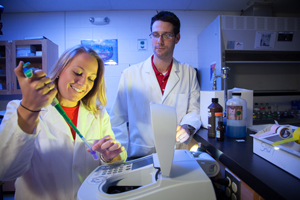
Atomic Absorption Spectrometry (AAS)
The atomic absorbance spectrometer uses the absorption of light to determine how much of a metallic element is in a sample. When we burn our sample in a flame, it breaks down into atoms. We can shine a special light, specific to each metal, through the flame in order to measure the amount of light absorbed by that metal in the sample. The more atoms of a metal in the sample, the more light will be absorbed.
Atomic Absorption Spectroscopy is used to determine concentrations of metals in samples obtained from the following fields:
- Environmental
- Pharmaceuticals
- Biological/Biochemistry
- Forensics
- Geology
- Medical
- Agriculture
- Material science
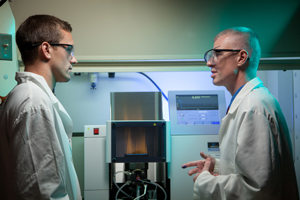
Fourier-Transform Infrared Spectroscopy (FTIR)
The FTIR measures the infrared absorptions for chemical compounds, and the data from this instrument can be used to help identify what functional groups, i.e. alcohols and carboxylic acids, are present in a particular molecule. This information is invaluable in determining the structure of organic compounds.
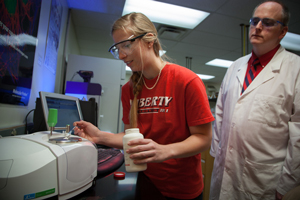
Gel Electrophoresis
Gel electrophoresis using a multi-channel pipette of various DNA samples.
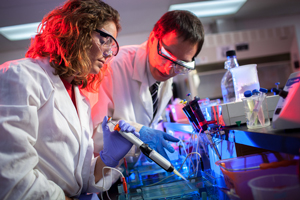
Benchtop DNA Sequencer
In the photo, Dr. Fabich is loading the flow cell to the MiSeq DNA Sequencer. He is holding a cartridge containing all of the reagents that the microfluidics uses in the flow cell. The first run on the DNA Sequencer generated 11 billion base pairs (the human genome is 3 billion base pairs).
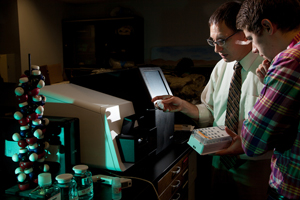
PowerLabs Instrument
The PowerLabs Advanced Teaching System is a versatile data capturing device adapted for animal and human physiological studies with capabilities like electrocardiogram (heart studies), electroencephalogram (brain/sleep studies), electromyelogram (muscle studies), and electroculogram (eye studies). These are combined with real-life clinical cases giving students an optimized and exciting learning experience in Anatomy, Physiology and Pharmacology labs.
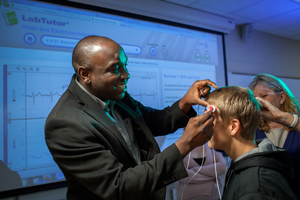
PDS-1000 Biolistic Particle Delivery System
The Biolistic Particle Delivery System (gene-gun) is an apparatus that uses gold or tungsten beads to deliver DNA into cells of various types, including plants and fungi. The gene-gun allows our faculty and research students to alter the genetic material of agriculturally and medically important fungi to study such processes as toxin production and pathogenesis. In so doing, we strive to understand these processes and use our understanding to mitigate their effects on human health.
Sonosim Ultrasound Simulator
iSTAT Blood Chemistry Analyzer
Piccolo Xpress Blood Chemistry Analyzer
Gas Chromatography Mass Spectrometry
TP1020 Automatic Tissue Processor
Leica Autostainer XL
MacroRam-Compact Bench Top Macro Raman Spectrometer
ChemiDoc MP Imaging System
Infinity II System
- Infinity II Quaternary Pump
- Infinity II Vialsampler
- Infinity II Variable Wavelength Detector
Agilent HPLC OpenLab ChemStation PC Bundle
HistoCore BIOCUT Microtome
HistoCore Arcadia H-Paraffin Dispenser
CombiFlash EZ Prep Chromatography System
Portable Transducer
Other Equipment & Techniques
- Electroporation
- RT-PCR
- Ultrasound
- Immunocytochemistry
- Electrofisher
- Visible Implant Elastomer Tagging
- Radio telemetry
- Genetic engineering
- Phonotype Microarrays